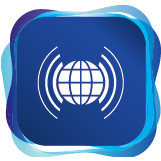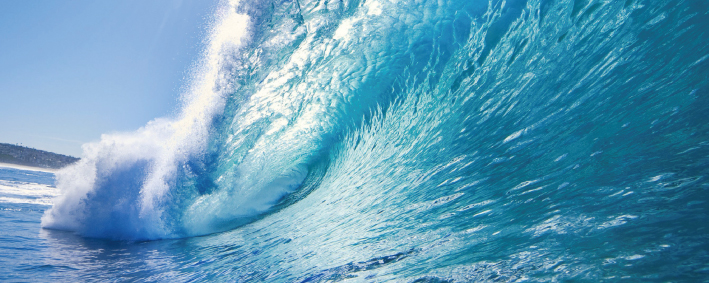 |
CCST9042 Science, Technology and Big Data
|
Course Description
The primary objective of this course is to elucidate the dynamics and physics of wave propagation in applied sciences and Nature. Understanding these principles and applying them wisely have dramatically improved the living conditions, safety and comfort of humankind. Wave motion acts as an agent for conveying information and energy. Elementary concepts of optics and acoustics will first be introduced, highlighting light and sound as examples of wave motion. The working principles of many novel devices and instruments – e.g. telescopes in astronomy, Doppler radar in detecting speeding vehicles and ultrasound imaging machines in the health care sector – will be explained. A major thrust will be placed on two modern devices, namely, optical fiber and mobile phones. The relation between mobile phones and radio wave transmission will be identified. Optical fiber networks are marvelous systems with tremendous capacity for carrying information electronically. Historical accounts, technical designs as well as social significance will be described. Finally, large scale wave motions in Nature, especially phenomena associated with earthquakes and tsunamis, will be presented.

Course Learning Outcomes
On completing the course, students will be able to:
- Recognize the importance and widespread occurrence of wave motion, the primary process in the transmission of energy and information in Nature.
- Comprehend the working principles of several selected inventions and phenomena, e.g. radar, mirage, and telescope, as examples of how wave motion has brought changes to the society.
- Describe the historical development of optical fiber and wireless communications, and identify and analyze the capability and the limitations of these two modern inventions of technology.
- Realize that waves of gigantic scales occurring in Nature (e.g. tsunamis and earthquakes) cannot be seen nor heard, and since measurements of these motions are difficult, international collaboration must be sought to mitigate potential damages.
- Demonstrate (a) understanding of how a body of scientific knowledge is created; (b) ability to apply established scientific principles to everyday devices and phenomena, and (c) capability to evaluate claims and conjectures in newspaper and media.
- Identify the distinctions, restrictions and interconnectedness between elegant, rigorous scientific principles and the demand for cost, efficiency and performance of products in technology.
Offer Semester and Day of Teaching
First semester (Wed)
Study Load
| Activities | Number of hours |
| Lectures | 20 |
| Tutorials | 12 |
| Reading / Self-study | 30 |
| Laboratory demonstrations | 1 |
| Assessment: Essay / Report writing | 40 |
| Assessment: Presentation (incl preparation) | 5 |
| Assessment: Quizzes (incl preparation) | 30 |
| Total: | 138 |
Assessment: 100% coursework
| Assessment Tasks | Weighting |
| Mid-term quizzes | 70 |
| Term paper | 15 |
| Presentation | 15 |
Required Reading
Selected chapters from:
- Krauskopf, K. B., & Beiser, A. (2006). The physical universe (11th ed.). Boston: McGraw-Hill Higher Education. [Only chapters on mechanics, wave motion, electricity and optics will be relevant.]
- Spencer, E. W. (2003). Earth science: Understanding environmental systems (1st ed.). Boston, MA: McGraw-Hill. [Only chapters related to earthquakes and tsunamis will be relevant.]
- Tillery, B. W. (2007). Physical science (7th ed.). New York: McGraw-Hill Higher Education. [Only chapters on mechanics, wave motion, electricity and optics will be relevant.
These three books are all written at a level suitable for first and second year students without quantitative background. Typically one or two chapter(s) from each book will be required for the preparation of the mid-term quiz. The “Recommended Reading” list (available from http://commoncore.hku.hk/ccst9042) contains books relevant for a term paper.
Readings on wave motion, mechanics, electricity and earth sciences to be specified later.
Course Co-ordinator and Teacher(s)
| Course Co-ordinator | Contact |
| Professor A.C.H. Tsang Department of Mechanical Engineering, Faculty of Engineering |
Tel: 3917 1505 Email: alancht@hku.hk |
| Teacher(s) | Contact |
| Professor A.C.H. Tsang Department of Mechanical Engineering, Faculty of Engineering |
Tel: 3917 1505 Email: alancht@hku.hk |
| Professor K.W. Chow Department of Mechanical Engineering, Faculty of Engineering |
Tel: 3917 2641 Email: kwchow@hku.hk |
| Professor K.K.Y. Wong Department of Electrical and Electronic Engineering, Faculty of Engineering |
Tel: 2857 8483 Email: kywong@eee.hku.hk |
| Professor Y.C. Wu Department of Electrical and Electronic Engineering, Faculty of Engineering |
Tel: 2859 7090 Email: ycwu@eee.hku.hk |

